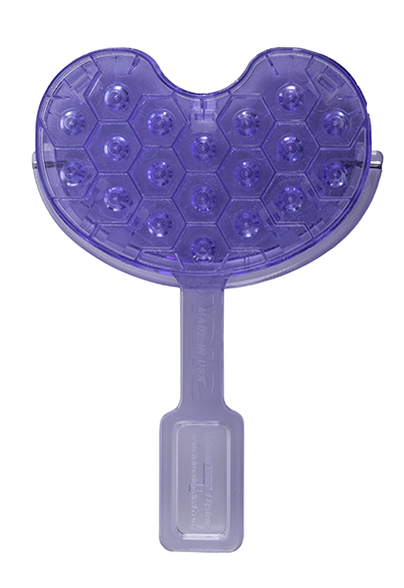


Traditional cement techniques are problematic in getting reliable cement penetration into bone. Cancellous bone such as of the proximal tibia is variable with respect to its porosity. The bone near the surface and edges of the tibial is less porous and more dense than deeper bone such as the bone near the keel of the implant. Therefore, with traditional cement techniques of either applying the cement to the bone or implant and then compressing with impaction of the implant, there may be inadequate cement penetration at the critically important surface and edges of the tibia. In fact, most of the cement with these techniques gets expressed out the sides with minimal bone penetration.
The Cement Punch was specifically designed to get a uniform 5 mm of cement penetration regardless of bone density. The patented pattern of cells in the Cement Punch compartmentalize the cement and force it to be injected into the bone without allowing it to flow to areas of less porosity. The Cement Punch allows for a customized amount of injection pressure on the cement in each cell to allow for uniform penetration in either dense or porous bone.
Download our Order Form More Information / Surgical TechniqueHow do I select the appropriate size cement punch?
It is important that you undersize the punch you select to leave at least 5mm of space between all edges of the tibia and the punch. This is to avoid the cortical bone at the edge of the tibia. Measure the width of the tibial surface and select:
Small – if the width is < 66mm
Medium - if the width is < 85mm
Large - if the width is > 85 mm
What type of cement can be used?
Any type of bone cement can be used with cement punch.
How do you deal with hard, sclerotic bone?
This really depends on how hard or sclerotic the bone is. If the bone is just more dense, but still has some porosity, then the cement punch should be able to handle it. Sometimes the tines on the bottom of the punch may deform with very hard bone, but this is normal. The tines are designed to deform rather than break. For really hard bone that is impenetrable, then we recommend selecting a smaller punch and placing it so as to avoid this bone and possibly make drill holes into the sclerotic bone.
What is the depth of penetration of the cement when the punch is used?
If the punch is fully seated into the bone, then you should get about 5mm of depth of penetration into the bone with the cement. If you want less than the 5mm of penetration, simply don’t seat the punch fully with the mallet.
When pulling on the release handle, there is some play between the top and bottom of the punch. Is this normal?
Yes, this is normal. Pulling on the release handle causes the top plate to move away from the bottom plate which opens the vent holes in each cell of the punch to allow air to get into the cells. This ensures that there is no vacuum created when removing the punch to prevent the injected cement from being sucked back out.
Why is cement punch better than simply drilling holes or using other devices that punch holes into the tibial surface?
When holes are drilled into the tibia to allow cement to go in, the cement fills these holes, but there is no interdigitation of the cement with the cancellous bone. With the cement punch, since the cement is actually being injected into the cancellous bone, there is excellent interdigitation and therefore better holding strength.